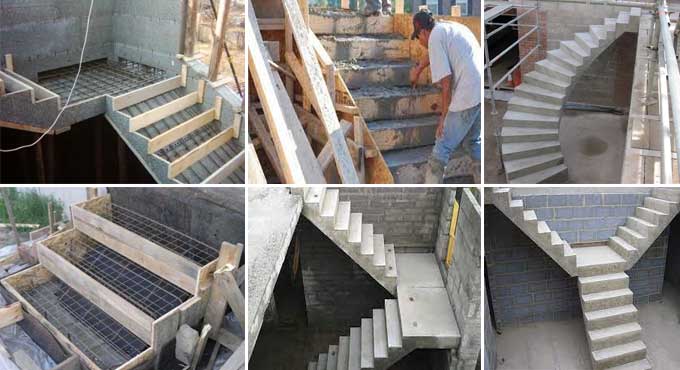
Concrete Staircase Formwork
Staircase forms are temporary fencing devices that are often used in concrete reinforced stair design. Draw the formwork for the future building first. Calculate the suspension load at the designated location. You calculate equipment and consumable quantities.
Apparatus
Board edges 25-30 mm, plywood is waterproof 20 mm. Rebar is 10-20 mm in diameter. Bars have a cross-section of 10-10 mm. Stykovanii and customization is essentials of design in the future, without slots and bevels. To do this, you must use screws and nails are not recommended because removing them from the boards will be difficult.
Make sure you have the tools you need:
Products may be customized by the level of customization Plumb Mechanical handsaws or jigsaws Electric drill bits or screwdriver sets; Hammer.
Reinforcement
The most commonly used rebar used to boost strength is ribbed. There are numerous soft twisted wire elements in this piece. Concrete monolithic stairways require a single step from the bottom to the top, starting from the bottom. By making it denser, the impurity sites prevent the Witecki solution of the formwork.
Applying electro vibrators is necessary to eliminate concrete air cavities. Formwork for the staircase is dismantled when the concrete is fully cured and tested for strength.
Formwork Installation for the Stairs
The following steps should follow when installing formwork between two walls adjoining each other:
- Make a plan of the staircase's location on the wall.
- The formwork for this wall is supported by wooden rails of I-beams and 15 cm nails.
- They were locked in concrete after installing the rack. Screw spacers attach hammered wedges.
- Stacking the boards, putting shingles on top, and sand the ends.
- Next, twist the rods and wires together for reinforcement.
- You can now start processing the steps. Put the Board against the wall and fasten it with a dowel. Keep an eye out for the metal corner on the right side of the assembly. Long nails fastened with the shotgun.
- All levels of the building are measured and corrected.
- Ideally, concrete should be poured into the product accurately and precisely.
Types of Formwork for Stairs
Wooden Floor
Special clamps place, in the beginning, one board at a time to ensure that there is no space between the boards. It is still necessary to use wooden wedges after nailing them.
Mobile
It is portable, disassembled, and can move several times. In large-scale enterprises and construction sites, this method is the most profitable and is used most often for the manufacture of staircase frames.
Overlapping film
It is easy, tough, and quick to create this product. A special plastic film applies to every step of the staircase, according to its number. It is possible to reuse concrete.
Spiral Staircase
Shuttering for spiral staircases is the most challenging and time-consuming. Due to the need to design each element separately, the technological process is complicated.
Consequently, the concrete spiral staircase formwork has been securely fastened, fixed, and verified. When installing the ladder, you can install an additional plate before pouring concrete for fasteners, from which the sidewalls will later be formed.
Workflow
You can stand on bars with a cross-section of 100 mm by 100 mm in an interval of 40-60 cm. For the formwork and rebar to support the design, the logs must be fixed with more logs, avoiding irregularities and airlocks.
A 3 m beam can support 150 kilograms when it is 100 by 100 mm. Determine how many props you need based on this. Crossbars can still be installed to improve the design.
Stairs Marching
It is important to follow strict guidelines when installing formwork stair marches. Fix the bars, which will base on pod-stupenki, to the two sideboards that are 20 cm wide. Then you will be able to use boards that are 40 mm thick. Add another focusing point to the construction. Set stakes in the ground before pouring concrete, & then remove all the bumps from the surface layer with a rasp after the stakes have dried. The structure is designed to support a concrete staircase, regardless of the number of steps and design.
Conclusion
Various forms of the ladder should be constructed in a strict sequence during the first phase of the project. The stairway frame needs to be reinforced with concrete and prepared by steps before the structure assembles. It will not be earlier than three to four weeks before the formwork is removed. It will shrink as the design dries.
Video Source: F&U-FORYOU


